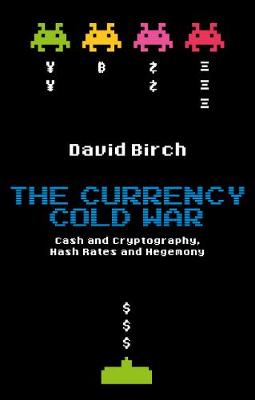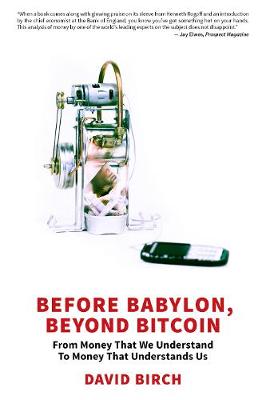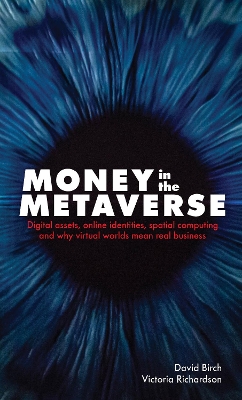Perspectives
4 total works
The way that money works now is a blip. It’s a temporary institutional arrangement agreed in response to specific political, technological and economic circumstances. As these circumstances change, so money must change. Many people think that it will undergo a pretty significant change in the very near future and we need to start planning for the coming era of digital currency. The historian Niall Ferguson wrote in 2019 that “if America is smart, it will wake up and start competing for dominance in digital payments”. Competing for this new currency dominance could mean a new cold war in cyberspace with, for example, Facebook’s private currency facing off against China’s public currency facing off against a digital euro. Or would a digital dollar win this new space race?
This is not just the concern of wide-eyed technologists obsessed with Bitcoin. In a 2019 speech the governor of the Bank of England said that a form of global digital currency could be “the answer to the destabilising dominance of the US dollar in today’s global monetary system”. But which digital currency? Will we really be choosing between the Federal Reserve and Microsoft (between dollar bills and Bill’s dollars)? Or between Facebook’s Libra and the Chinese Digital Currency/Electronic Payment system “DC/EP”? Between spendable SDRs and Kardashian Kash?
It would be a mistake to see this as a technical debate about cryptocurrencies and blockchains, about hash rates and key lengths. It matters far beyond the virtual boundaries of the new age. The dollar’s dominance gives America the ability to exert soft power through the International Monetary and Financial System. A serious implication of replacing existing monetary arrangements with new infrastructure based on digital currency is that this power might be constrained. How might America respond to losing its hegemony?
Now that the technologists, the business strategists, the economists and the national and international regulators are beginning to glance in the direction of these alternatives, the whole topic of digital currency needs to be explored. In this book, industry expert David Birch sets out the economic and technological imperatives, discusses the potential impact, and highlights a series of tensions—between public and private and, most importantly, between East and West—to contribute to the high-level debate that we must have to begin to shape the International Monetary and Financial System financial system of the near future.
This is not just the concern of wide-eyed technologists obsessed with Bitcoin. In a 2019 speech the governor of the Bank of England said that a form of global digital currency could be “the answer to the destabilising dominance of the US dollar in today’s global monetary system”. But which digital currency? Will we really be choosing between the Federal Reserve and Microsoft (between dollar bills and Bill’s dollars)? Or between Facebook’s Libra and the Chinese Digital Currency/Electronic Payment system “DC/EP”? Between spendable SDRs and Kardashian Kash?
It would be a mistake to see this as a technical debate about cryptocurrencies and blockchains, about hash rates and key lengths. It matters far beyond the virtual boundaries of the new age. The dollar’s dominance gives America the ability to exert soft power through the International Monetary and Financial System. A serious implication of replacing existing monetary arrangements with new infrastructure based on digital currency is that this power might be constrained. How might America respond to losing its hegemony?
Now that the technologists, the business strategists, the economists and the national and international regulators are beginning to glance in the direction of these alternatives, the whole topic of digital currency needs to be explored. In this book, industry expert David Birch sets out the economic and technological imperatives, discusses the potential impact, and highlights a series of tensions—between public and private and, most importantly, between East and West—to contribute to the high-level debate that we must have to begin to shape the International Monetary and Financial System financial system of the near future.
This book argues that identity is changing profoundly and that money is changing equally profoundly. Because of technological change the two trends are converging so that all that we need for transacting will be our identities captured in the unique record of our online social contacts. Social networks and mobile phones are the key technologies. They will enable the building of an identity infrastructure that can enhance both privacy and security - there is no trade-off. The long-term consequences of these changes are impossible to predict, partly because how they take shape will depend on how companies (probably not banks) take advantage of business opportunities to deliver transaction services. But one prediction made here is that cash will soon be redundant - and a good thing too. In its place we will see a proliferation of new digital currencies.
Money is changing, and this book looks at where the technology of money might be taking us in the future. Technology has moved our concept of money from physical things, to unseen bits of information. With the arrival of smart cards, mobile phones and Bitcoin, it has become easier than ever to create new forms of money. Crucially, money is also inextricably connected with our identities. Your card or phone can identify you for security - and also enable information about you to be associated with your money (think for example of store 'points' cards). To understand all of this and to see where we might be going, the author first of all looks back over the whole history of money, which spans thousands of years. He sees evidence for possible futures in the past, both recent and ancient. After all, not all 'future' starts from today. For example, it can be argued that the future of money began back in 1971, when money became a claim backed by reputation rather than by commodities of any kind. At this point, money became bits. Looking much further back to a world before cash and central banks we see multiple 'currencies' operating at the level of communities, and the use of barter.The newest technologies will take money back to where it came from: a substitute for memory, to record mutual debt obligations within multiple overlapping communities. This time though money will be smart. It will be money that reflects the values of the communities that produced it. Future money will know where it has been, who has been using it and what they have been using it for.
The Metaverse - built from virtual reality, augmented reality and mixed reality - is arriving via wearable headsets that have cameras, microphones, speakers, sensors and communications built in. These spatial computing technologies create new social and economic connections, and while some of these connections are virtual, the business implications are very real.
The authors set out the potential for financial services in metaverses and the 'always-on' immersive future internet, beginning with a look at the key technologies needed to make these metaverses useful for businesses. They then go on to explore the emerging realities in which new markets will function and the digital assets that will be exchanged in transactions between online identities.
The book develops a comprehensive and practical model of the Metaverse and the nature of those new transactions in a business environment. It has a clear view of virtual worlds and it provides both a simple taxonomy for digital assets and a tried-and-tested model of digital identity that will provide a better understanding of the opportunities that exist in the many metaverses where we will work, rest and play in the near future.
The authors set out the potential for financial services in metaverses and the 'always-on' immersive future internet, beginning with a look at the key technologies needed to make these metaverses useful for businesses. They then go on to explore the emerging realities in which new markets will function and the digital assets that will be exchanged in transactions between online identities.
The book develops a comprehensive and practical model of the Metaverse and the nature of those new transactions in a business environment. It has a clear view of virtual worlds and it provides both a simple taxonomy for digital assets and a tried-and-tested model of digital identity that will provide a better understanding of the opportunities that exist in the many metaverses where we will work, rest and play in the near future.



